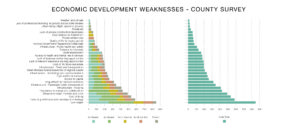 Montana’s overall economy is going to be “hard pressed” to hit the 3-percent growth mark forecasted by the Bureau of Business and Economic Research, reported Patrick M. Barkey, head of that agency at the University of Montana.
Montana’s overall economy is going to be “hard pressed” to hit the 3-percent growth mark forecasted by the Bureau of Business and Economic Research, reported Patrick M. Barkey, head of that agency at the University of Montana.
The boom that Montana has been experiencing is showing signs of slowing, said Barkey in a report in the Montana Business Quarterly. The new trends will be important factors for state decision makers as they head for the Montana State Legislature, he said.
Barkey will explore what’s in store for the state in depth during the 2015 Economic Outlook Seminar, which the bureau will hold in Billings on Feb. 3. The seminar will focus on the impacts of the energy boom on Yellowstone County and the state.
“It’s an energy boom, but it’s completely different from the past,” Barkey said.
Bill Whitsitt, a retired Devon Energy executive vice president and BBER executive-in-residence, will be the keynote speaker.
At the beginning of the year, the bureau projected a growth rate of 3 percent for Montana in its annual Economic Outlook series of seminars, but that may have been too optimistic.
The trends are being revealed through such economic indicators as the Montana income tax withholding receipts, which show slower growth during the first half of 2014. The reasons for that are mixed.
“The commodity boom that pushed natural resource prices up to dizzying heights as recently as 2011 has clearly come to an end,” said Barkey. “The energy boom in the Bakken and other places is maturing, although market conditions for Montana cattle producers remain extremely favorable.”
“Unspectacular” growth in the national economy is also a contributing factor. Nationally, the economy turned in its best growth quarter in the spring of this year, but it followed a winter quarter that experienced the worst decline in economic output since the 2007-09 recession.
The net result of a 1 percent annual rate of growth in gross domestic product in the first half of this year, “for the world’s largest economy, was certainly disappointing,” said Barkey.
A decline in the demand for metals, and a contracting in federal government largess to the state are having an impact on Montana’s economy.
“Over the last two-and-a-half years, the situation in global commodities markets has performed an about face. The nearly decade-long advance in metals prices — especially for copper — thanks to the insatiable appetite of rapidly industrializing countries like China, ended in 2011. The price retreats since then have hurt Montana suppliers. The only important metals for Montana to buck this trend have been platinum and palladium, whose recent price surges are attributable to worldwide sanctions on Russian production,” said Barkey.
During 2013, federal payrolls in Montana declined by almost $30 million. Most of the declines were in Bureau of Land Management and National Forest Service activities, partially because of less firefighting activity.
Barkey went on to say that Gallatin and Yellowstone counties continue to pace growth among the state’s urbanized counties, but there is also economic strength in eastern Montana.
“Energy and agriculture have continued to cause non-urban growth to be very strong outside of western Montana,” he said.
There has been considerable recovery in Montana’s housing markets since the low point of the recession in 2009, even though most western counties remain “well off their levels” of building activity in 2004. The average sale price of homes purchased in 2013 was $230,244, up from the average price of $203,668 of transactions in 2009. In the more populous western counties, median sales prices have risen back close to their 2008 levels, while sales prices in Yellowstone County and many Eastern Montana counties have substantially surpassed that mark.
Accompanying this rebound in prices has been a long-delayed pick up in demand for new homes. The calendar year 2013 saw respectable levels of home-building activity across the state. Housing starts, which are estimate by the BBER base upon both building permits as well as utility hookups, were highest in the state’s more urbanized counties last year.
Yellowstone County had almost 2,000 units began, thanks to a big increase in new multi-unit dwellings started last year. Gallatin County’s 1,409 units started in 2013 were second highest in the state, with a larger proportion of single-family homes. There is also considerable building activity in oil-dominated counties such as Richland and Roosevelt counties in the east


